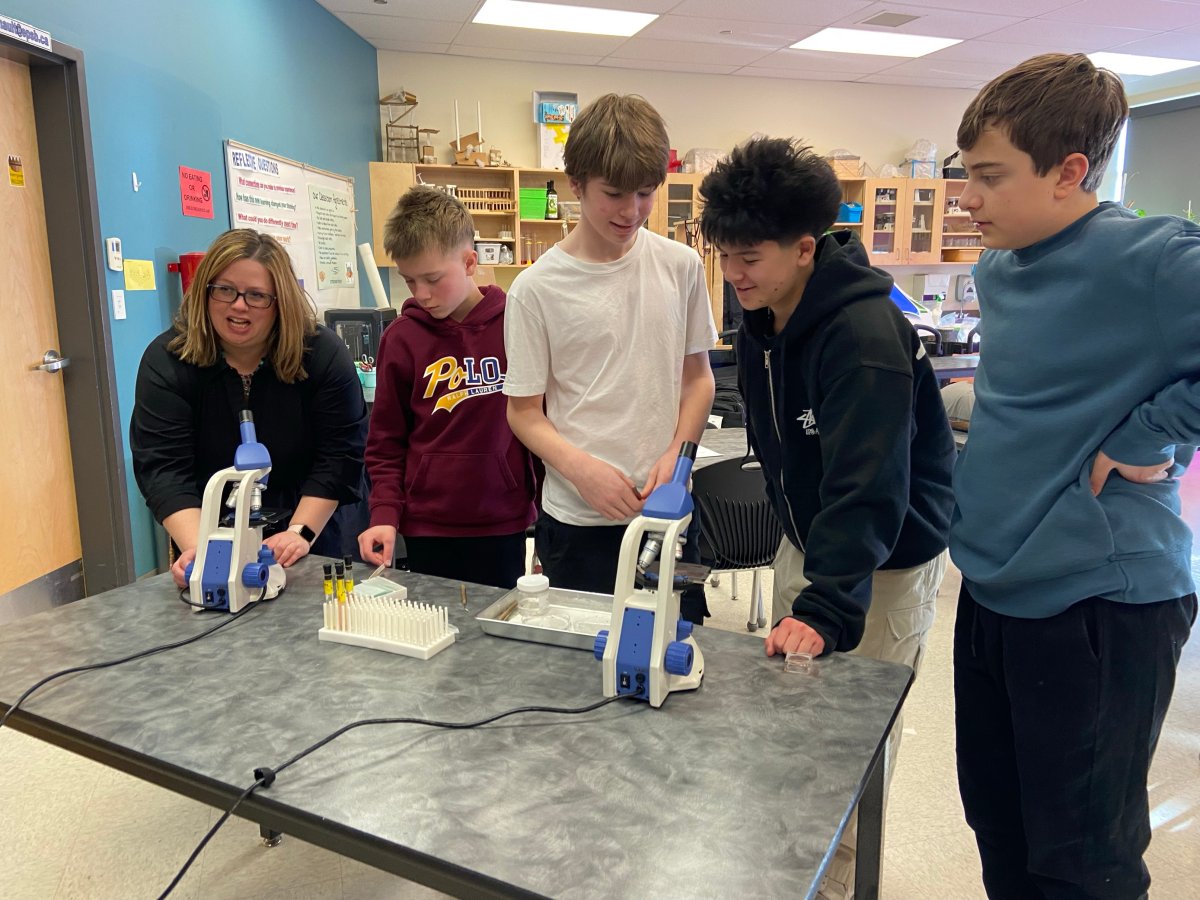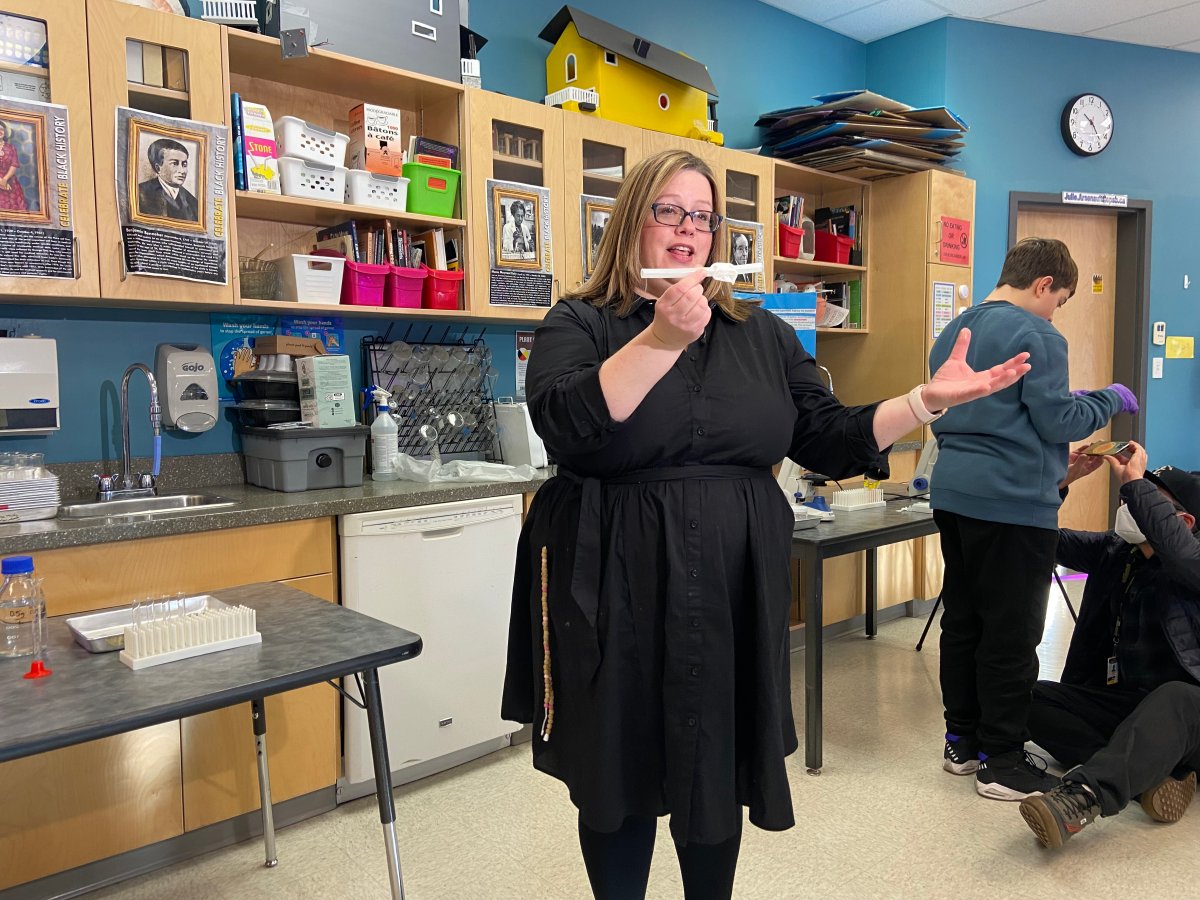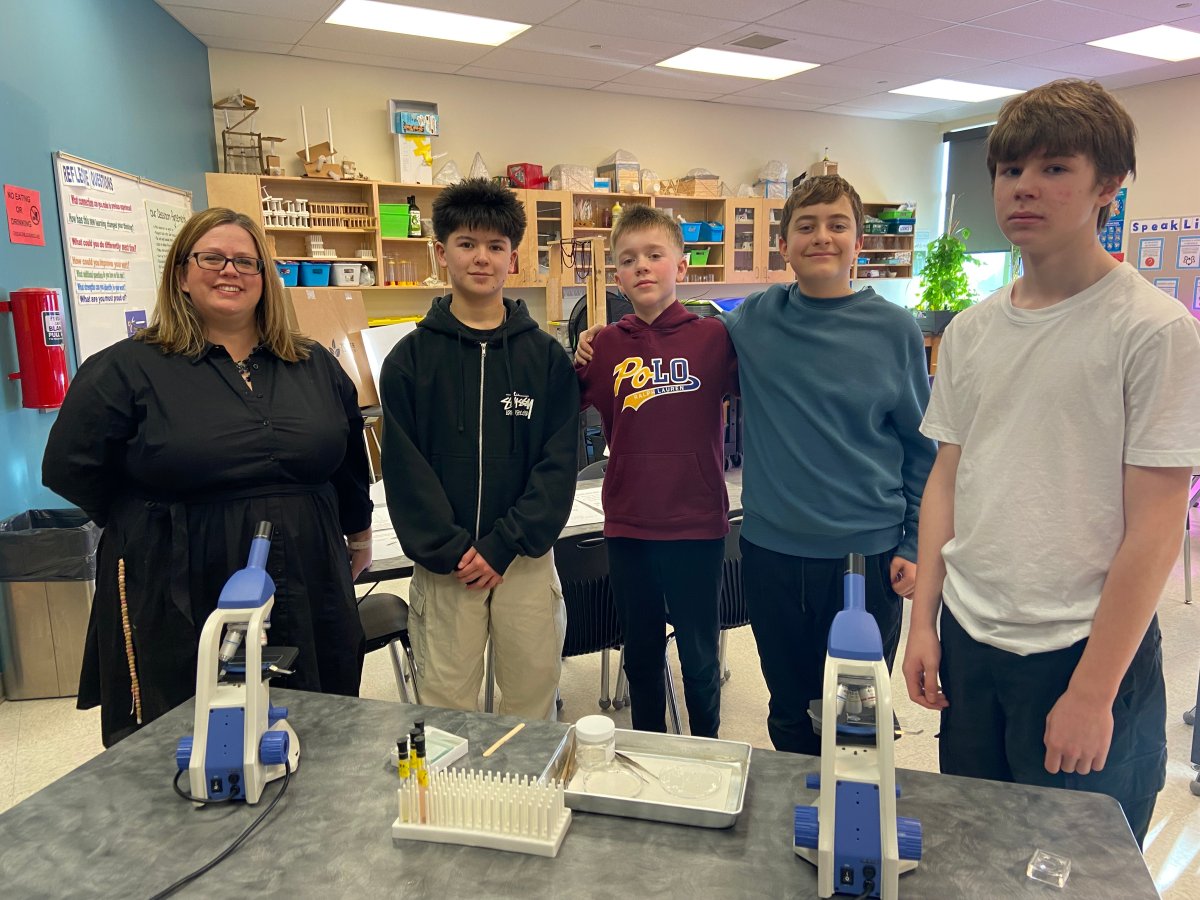Students at Michael Strembitsky School are working on an out of this world science project, with the results to be tested on the International Space Station later this year as part of the Student Spaceflight Experiments Program (SSEP).

The assignment challenged four students in Grade 8 to test how microgravity affects the reproduction and regeneration of a species of flatworms in space.
“They are the ones who came up with it themselves,” said Julie Arsenault, a science lead teacher at the school. “It’s the ultimate science project. I just facilitated, they came up with it themselves.”
Arsenault said the idea for the project was based on the use of flatworms in fish farming.
“If humans go off planet, we will primarily have to be plant based, but these smart young gentlemen had the idea that we could bring small cultures of fish eggs and potentially flatworms and raise those for food. So, they kind of went with it and found some other incredible connections to stem cell regeneration,” Arsenault said.
“We tried to look for something special, and it was these worms, flatworms, that can regenerate on their own,” said student Owen Banfield. “We started researching to see if they could survive in space.
“It’s been pretty cool. I think I could probably put this on my resume.”
Michael Strembitsky School submitted two projects to SSEP on behalf of Edmonton Public Schools.
“When they said we had won, it felt kinda surreal to me,” said Riley Ng. “The best moments were trial and error. The human body needs a lot of nutrients to survive. If we’re to keep sending more people into space, we need food, too.”
Arsenault said the students put a lot of research and writing into developing their experiment and that being selected by SSEP is a point of pride. “As an educator, all you can hope for is that your students find something that they’re engaged in and passionate about.”
The project wasn’t without its challenges either. Trials needed to be re-done and some of the worms were eating too much, so food had to be scaled back.
SSEP was launched in June 2010 by the National Center for Earth and Space Science Education (NCESSE). The program is described as a ‘high-caliber’ STEM initiative that challenges students ownership of science exploration and a love of learning.
The microgravity experiment will see one of the student-led experiments flown to the International Space Station (ISS) where it will be operated by astronauts. The experiment is designed for operation in a flight-certified mini-laboratory. After a four- to six-week stay in orbit, the experiment will be returned to Earth for harvesting and analysis by the student flight team.





Comments